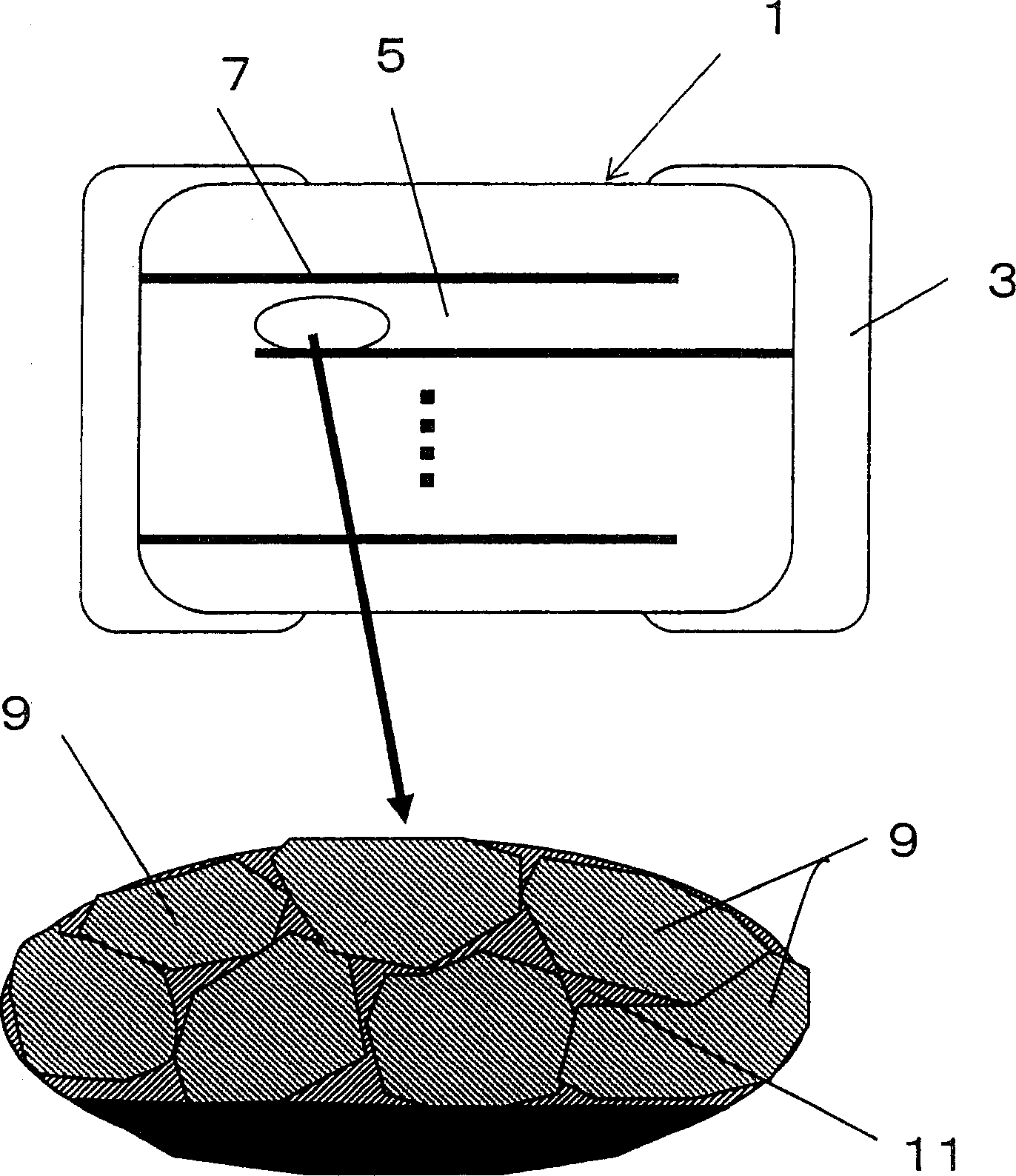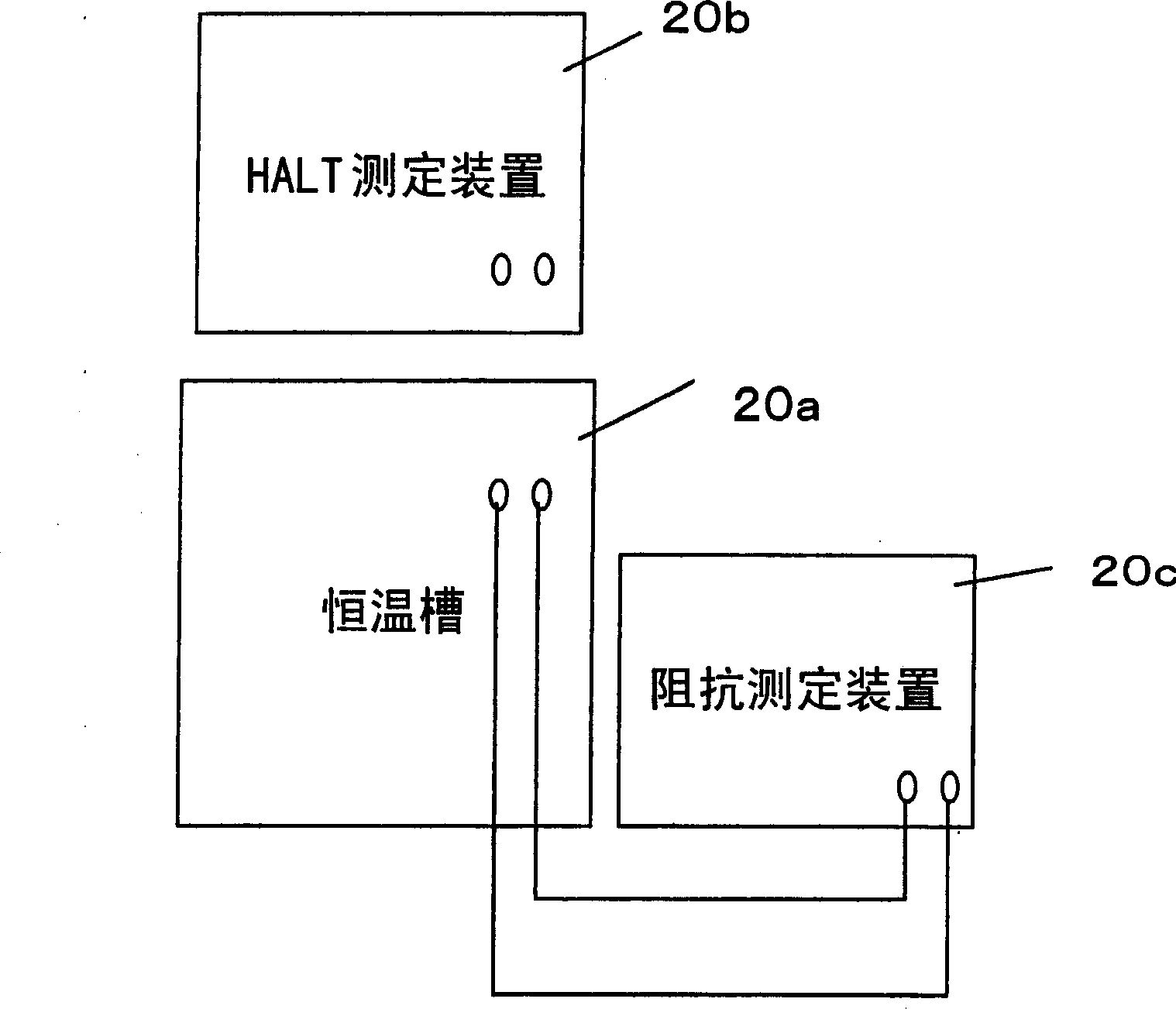Dielectric ceramics, multilayer ceramic capacitor and method for manufacturing the same
A technology of ceramic capacitors and dielectric layers, which is applied in the direction of laminated capacitors, fixed capacitor dielectrics, and parts of fixed capacitors, etc. It can solve the problems of reduced insulation, reduced reliability, and increased temperature characteristics.
- Summary
- Abstract
- Description
- Claims
- Application Information
AI Technical Summary
Problems solved by technology
Method used
Image
Examples
Embodiment 1
[0085] The effect of the volume per unit cell represented by the product of the lattice constants (a, b, c) obtained by X-ray diffraction was confirmed for the dielectric ceramic of the present invention. First, dielectric material powders obtained by the sol-gel method, the hydrothermal synthesis method, the oxalate method, and the solid-phase method shown in Table 1 were prepared. These powders were mixed so that the Ba / Ti ratio became 1.005.
[0086] Then, without using a zeolite-based desiccant for drying the powder, the powder was preliminarily dried under atmospheric pressure and an atmosphere at a temperature of 200°C.
[0087] On the other hand, when a zeolite-based desiccant is used, the prepared dielectric material powder is prepared at atmospheric pressure and 400°C, using alumina silicate as the main component and having a specific surface area of 600m 2 / g of zeolite-based desiccant was subjected to drying heat treatment to obtain dielectric powder. The amount...
Embodiment 2
[0097] First, in order to confirm the effect of the softening point of the glass and the thermal expansion coefficient, the dielectric powder was made into a tablet shape with a diameter of 12 mm and a thickness of 1 mm, and the evaluation was performed by firing the tablet. The results are shown in Tables 2 and 3 as dielectric ceramics. Tables 2 and 3 show the average particle size, A / B ratio, c / a ratio, addition amount, firing temperature, and glass composition of the barium titanate used. The barium titanate powder used was a material containing 0.1, 1, and 0.2 parts by mass of Mg, Y, and Mn in terms of oxides relative to 100 parts by mass of the barium titanate powder. As the glass powder, a glass component containing 1 part by mass based on 100 parts by mass of barium titanate powder was used. The A / B site ratios of the BT powder used here were 1.003 and 1.001.
[0098] The softening point of the glass powder was measured using TG-DTA by making the glass powder into a t...
PUM
| Property | Measurement | Unit |
|---|---|---|
| particle size | aaaaa | aaaaa |
| particle size | aaaaa | aaaaa |
| particle size | aaaaa | aaaaa |
Abstract
Description
Claims
Application Information
 Login to View More
Login to View More - R&D
- Intellectual Property
- Life Sciences
- Materials
- Tech Scout
- Unparalleled Data Quality
- Higher Quality Content
- 60% Fewer Hallucinations
Browse by: Latest US Patents, China's latest patents, Technical Efficacy Thesaurus, Application Domain, Technology Topic, Popular Technical Reports.
© 2025 PatSnap. All rights reserved.Legal|Privacy policy|Modern Slavery Act Transparency Statement|Sitemap|About US| Contact US: help@patsnap.com



